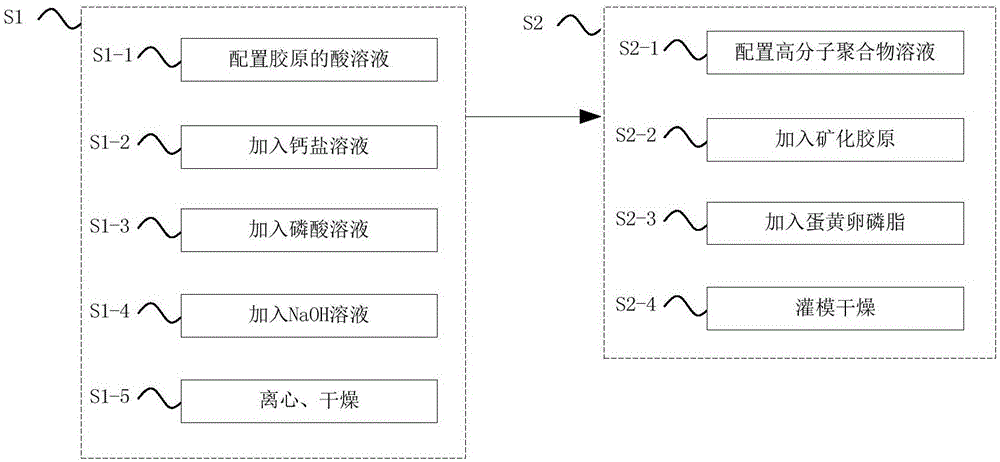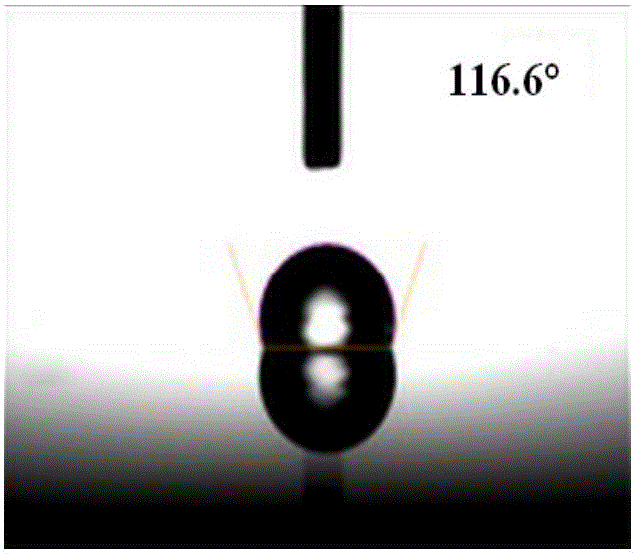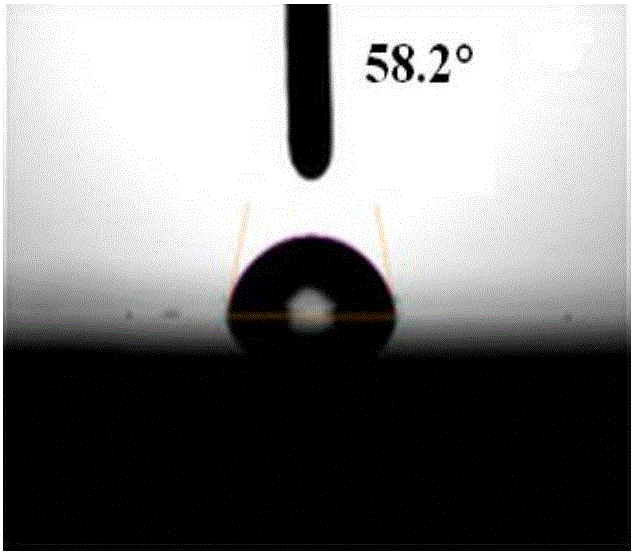High-molecular based transmitting tissue regeneration membrane as well as preparation method and application thereof
A polymer-based technology for guiding tissue regeneration, applied in the field of polymer-based guided tissue regeneration film and its preparation, can solve the problems of poor material performance, poor adhesion, poor compatibility, etc., achieve moderate thickness and reduce costs , The effect of degradation performance promotion
- Summary
- Abstract
- Description
- Claims
- Application Information
AI Technical Summary
Problems solved by technology
Method used
Image
Examples
preparation example Construction
[0044] see figure 1 , is a flowchart of a method for preparing a polymer-based guided tissue regeneration membrane according to a preferred embodiment of the present invention. Such as figure 1 Shown, this preparation method comprises the following steps:
[0045] Step S1, preparation of mineralized collagen, specifically includes:
[0046] Step S1-1, dissolving type I collagen in any one of hydrochloric acid, nitric acid or acetic acid to prepare an acid solution of collagen, wherein the concentration of collagen is 0.01-0.2 g / ml (such as 0.01, 0.05, 0.1 or 0.2 g / ml ml). Wherein the concentration of hydrochloric acid, nitric acid or acetic acid is preferably 0.1-1 mol / L, more preferably 0.5 mol / L.
[0047] Step S1-2, adding calcium salt solution dropwise to the collagen acid solution, wherein the amount of calcium ions added is 0.1-2 mol (eg 0.1, 0.5, 1, 1.5 or 2 mol) of calcium ions per gram of collagen. More preferably, 1-2 mol of calcium ions are added per gram of col...
Embodiment 1
[0078] (1) Dissolving type I collagen in acetic acid with a concentration of 0.1M to form an acid solution of collagen, wherein the concentration of collagen is 0.01g / ml;
[0079] (2) adding a calcium salt solution dropwise to the acid solution of the collagen, wherein the amount of calcium ions added is 1 mol of calcium ions corresponding to each gram of collagen;
[0080] (3) Add phosphoric acid solution dropwise in the solution obtained in step 2, wherein the molar ratio of the amount of phosphate ions added to the amount of calcium ions added in step S1-2 is Ca / P=1.5 / 1;
[0081] (4) NaOH solution is added dropwise in the solution obtained in step 3 to form a mixed solution, and the pH value is adjusted to be 8;
[0082] (5) After the mixed solution obtained in step 4 was left to stand for 4 hours, the precipitate was centrifuged at a speed of 3000 r / min, and then air-dried at 60° C. for 36 hours to obtain powdered mineralized collagen.
[0083] (6) Take by weighing PCL, P...
Embodiment 2 to 22
[0088] Except for the contents of Table 1 below, it was carried out in substantially the same manner as in Example 1. Table 2 shows the contact angle, tensile strength and suture tensile strength of the polymer-based guided tissue regeneration membranes of Examples 1-4 and 19-20.
[0089]
[0090]
PUM
| Property | Measurement | Unit |
|---|---|---|
| Thickness | aaaaa | aaaaa |
| Particle size | aaaaa | aaaaa |
| Intrinsic viscosity | aaaaa | aaaaa |
Abstract
Description
Claims
Application Information
 Login to View More
Login to View More - R&D
- Intellectual Property
- Life Sciences
- Materials
- Tech Scout
- Unparalleled Data Quality
- Higher Quality Content
- 60% Fewer Hallucinations
Browse by: Latest US Patents, China's latest patents, Technical Efficacy Thesaurus, Application Domain, Technology Topic, Popular Technical Reports.
© 2025 PatSnap. All rights reserved.Legal|Privacy policy|Modern Slavery Act Transparency Statement|Sitemap|About US| Contact US: help@patsnap.com



